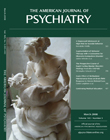The Prospective Course of Rapid-Cycling Bipolar Disorder: Findings From the STEP-BD
Abstract
Objective: In a naturalistic follow-up of adult bipolar patients, the authors examined the contributions of demographic, phenomenological, and clinical variables, including antidepressant use, to prospectively observed mood episode frequency. Method: For 1,742 bipolar I and II patients in the Systematic Treatment Enhancement Program for Bipolar Disorder (STEP-BD), episodes of mood disorders were evaluated for up to 1 year of treatment. Results: At entry, 32% of the patients met the DSM-IV criteria for rapid cycling in the prestudy year. Of the 1,742 patients, 551 (32%) did not complete 1 year of treatment. Among the 1,191 patients remaining, those with prior rapid cycling (N=356) were more likely to have further recurrences, although not necessarily more than four episodes per year. At the end of 12 months, only 5% (N=58) of the patients could be classified as rapid cyclers; 34% (N=409) had no further mood episodes, 34% (N=402) experienced one episode, and 27% (N=322) had two or three episodes. Patients who entered the study with earlier illness onset and greater severity were more likely to have one or more episodes in the prospective study year. Antidepressant use during follow-up was associated with more frequent mood episodes. Conclusions: While DSM-IV rapid cycling was prospectively observed in only a small percentage of patients, the majority of these patients had continued recurrences at lower but clinically significant rates. This suggests that cycling is on a continuum and that prevention of recurrences may require early intervention and restricted use of antidepressants.



